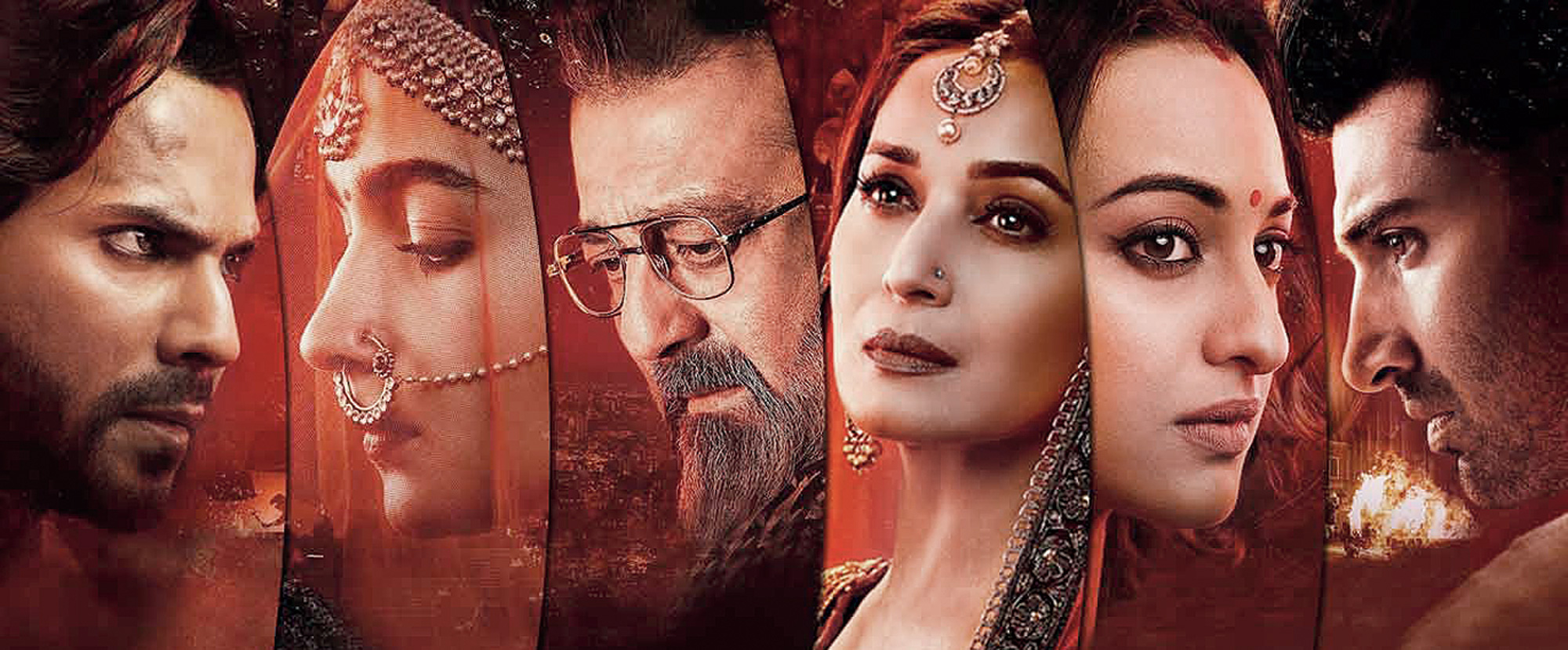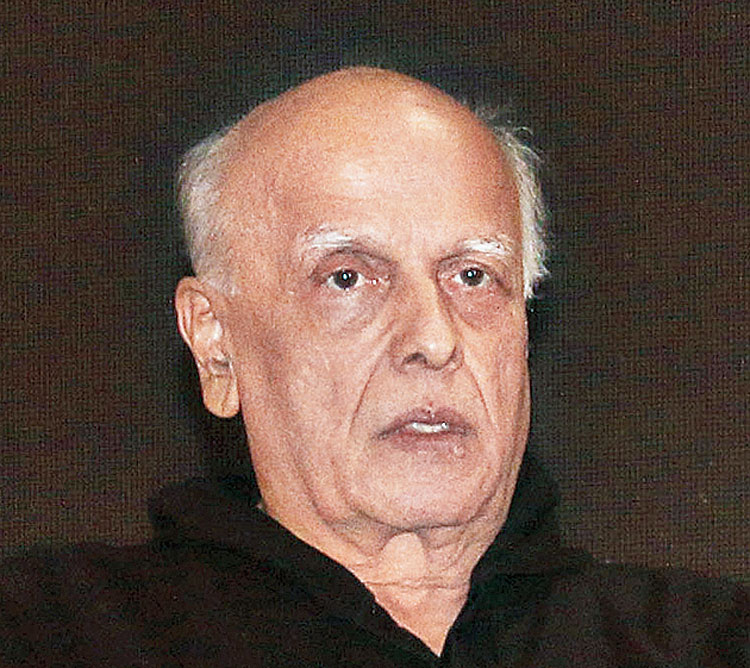It takes two hours and 15 minutes for Sanjay Dutt and Madhuri Dixit to come face to face in Kalank. That is no spoiler, given that Dutt is credited with a special appearance. But it’s those three minutes — with the two actors made to deliver lines that blur the lines between reel and real, with their eyes speaking a whole lot more — that shows us what Kalank could have been if it had chosen to centre more on the pair that fired up the big screen through the ’90s than focus solely on building a story around its younger actors. It’s a rare scene in the film that not only evokes a sense of nostalgia but also sears with its unspoken chemistry. But it gets over in a flash, and Kalank goes back to being what it is through its 168-minute running time — a visual extravaganza with very little soul.
Kalank plays out in a make-believe world that attempts to set itself up against the backdrop of the subcontinent’s turbulent past and has a love story blossoming in the middle of religious and socio-political strife. There is a gamut of emotions — love and lust, jealousy and rage, hatred and fear — but because everything is swathed in visual excess, little of it is able to power through and engage the viewer.
While the indulgent first half is spent in introducing characters at random, an overstretched Half Two does manage to pack in some stirring moments, but not quite enough.
Set in the pre-Partition years in Husnabad in Lahore, Kalank is a story of a marriage of compromise, forbidden love, religious conflict, a fast-changing political landscape and marginalisation. It flits from the opulent mansion of the well-heeled Chaudhary family, led by patriarch Balraj (Sanjay Dutt), his son Dev (Aditya Roy Kapur) and daughter-in-law Satya (Sonakshi Sinha) to the streets of Heera Mandi, the city’s red-light district, where Bahaar Begum (Madhuri Dixit) has long given up her ghungroos and now tutors young girls in singing.
A terminally ill Satya compels Dev to marry again, with the effervescent Roop (Alia Bhatt) making her way into the family. With Dev confessing to his new wife that this is a marriage of compromise (“Iss shaadi mein izzat hogi pyaar nahin,” he tells her on the night of the wedding without even bothering to steal a look at her), Roop sets out to find her piece of freedom even as she’s trapped in a loveless marriage. It starts off by her insisting that she wants to learn singing from Bahaar Begum to working as a journalist in the family-owned newspaper to making her way into the lanes of Heera Mandi and falling in love with the rakish Zafar (Varun Dhawan).
Their forbidden romance has its roots in Zafar’s illegitimacy and suffers a tumultuous fate, culminating in a powerful if overlong climax featuring the two that draws inspiration from the eternal love story in Dilwale Dulhania Le Jayenge but doesn’t quite have the same happy ending.
Directed by Abhishek Varman — who made 2 States on debut, impressing with a watchable film based on an average Chetan Bhagat read — Kalank overreaches on every count, but its story never lives up to its ambition, even if its scale does.
Palatial mansions, imposing sets, gorgeous costumes, faces enveloped in a perpetual glow, chiselled bodies, dancers moving in perfect symmetry, dusty streets dressed in fairytale-like radiance, castle-like homes surrounded by moats, flower-laden boats ferrying people from one mansion to another… everything is choreographed and prettified in the world of Kalank.
The film may play out in the mid-1940s, but is muddled in its portrayal of time and space. The socio-political fabric is distinctly pre-Partition, but in look and feel there is the unmistakable stamp of a Sanjay Leela Bhansali period film. But what is organic to a Bhansali visual extravaganza seems rather forced here and despite some of its dramatic flourishes and Binod Pradhan’s spectacular camerawork, Kalank drowns in its excesses. For a film that ramps up its scale in every scene, the VFX is also surprisingly shoddy, the lowlight being a bull-fighting scene pitting a badly done CGI bull against Varun’s CGI-enhanced pecs and abs.
It doesn’t help that the characters speak throughout in aphorisms, peppered with lines like “Jab kisi aur ke barbaadi humein apni jeet lage toh humse barbaad koi aur nahin” and “Main ishq ladaa ta toh hoon patang ki tarah lekin ishq se kat ta nahin.”
Part of the reason why Kalank fails to engage is its uneven performances. As in their previous films together, Varun and Alia have palpable chemistry but while Varun shines for the most part, Alia seems a little out-of-depth with her poorly written character. Aditya Roy Kapur does well, bringing both pathos and gravitas to his part with his scenes with Dutt being one of the highlights of the film. Madhuri has a meatier role than Dutt and while her close-ups are largely unflattering, she wins us over with her graceful moves in Tabaah ho gaye. The music scored by Pritam is worth a listen, with the peppy First class and Arijit Singh’s soulful rendition of the title track being the standouts.
Given its budget and star-studded line-up, Kalank, at the end, is a bit of a missed opportunity. If only story and soul had not been sacrificed at the altar of spectacle.











